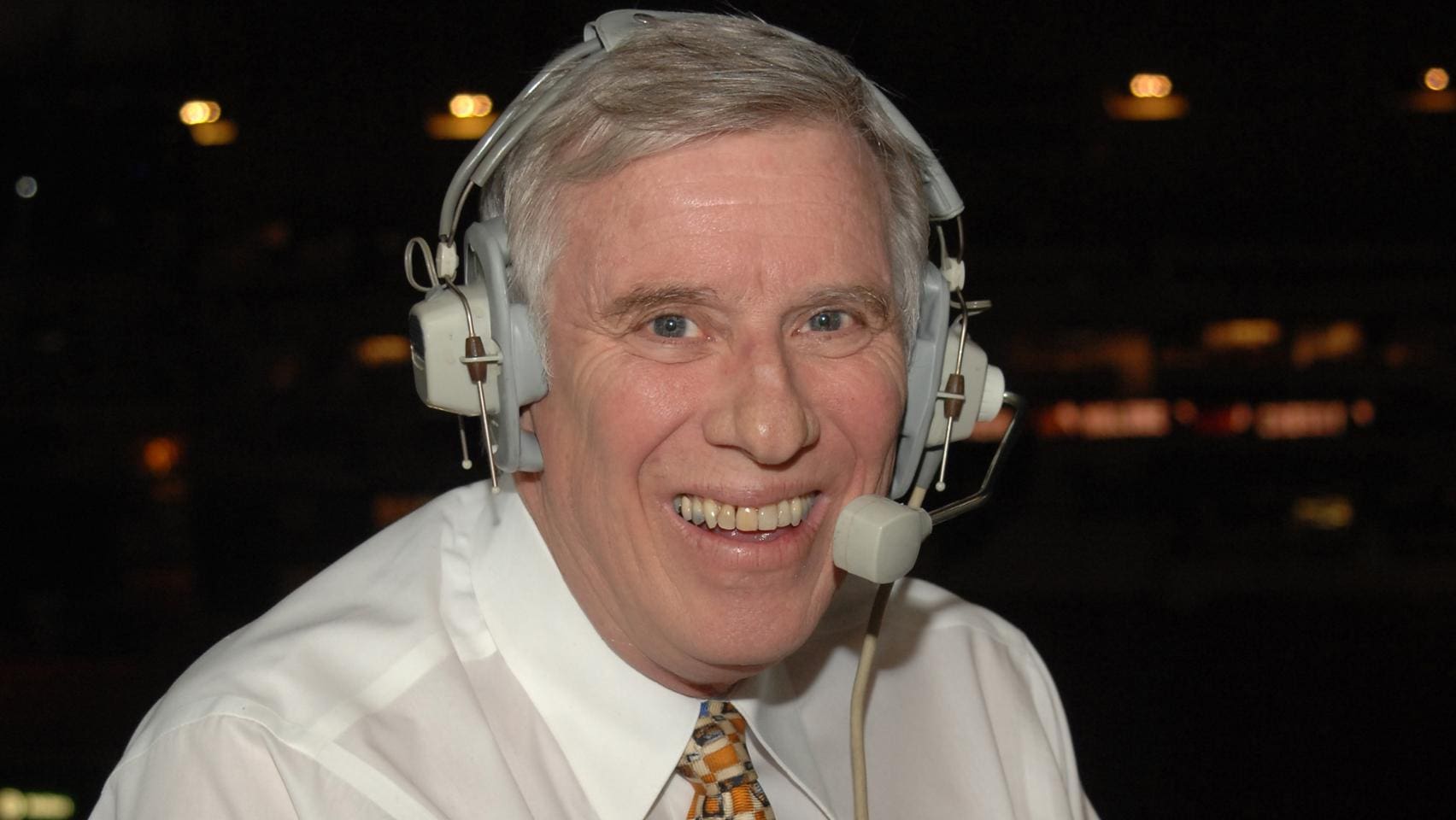Penguins
Molinari: Buy Mike a Flag … and Get a Statue, too

Mike Lange just might be the second-most important person in Pittsburgh Penguins history.
Sure, you could make a case — and a pretty compelling one — for Craig Patrick or Sidney Crosby or perhaps a few others being the silver medalist behind Mario Lemieux, but the one for Lange can begin and end with this: If not for him, Crosby and Patrick — along with Jaromir Jagr, Evgeni Malkin, Paul Coffey, Ron Francis, Kris Letang and others who were masters of their craft — might never have worked in this town.
That’s because they all came along after Lange’s work made it possible for hockey’s faint pulse here to continue registering through winters when the on-ice product almost seemed intent on killing it.
For several long, bleak seasons in the early 1980s, Lange’s broadcasts were easily the most entertaining thing about the Penguins. Often, the only one.
He wasn’t able to attract large crowds to the Civic Arena — Penguins games usually were a swell place to conduct clandestine meetings in those days — but he did give people reason to continue paying at least a little attention to the NHL.
Which is a lot more than anyone could credibly accuse Pittsburgh’s teams in those days of doing.
The Penguins began to emerge from their Dark Ages when Lemieux arrived in 1984. What had been incessant speculation about the franchise relocating to Hamilton, Ontario, among other places, waned and opponents no longer could view taking two points from the Penguins as hockey’s equivalent of a gimme putt.
One constant as the Penguins transitioned from punchline to powerhouse: Mike Lange.
He successfully bridged the eras of the tragicomical and the triumphant with his exceptional instincts — and pure enthusiasm — for the game intact, and his repertoire of signature goal calls even more diverse and creative.
What began mostly as “Great Balls of Fire” and “Hallelujah, Hollywood” — with perhaps an occasional “Look Out, Loretta” tossed in — grew almost exponentially over the years, and entertained generations of Penguins partisans.
That includes many who hadn’t even been born when Lange was doing so much to keep the NHL on life-support in this region.
He earned a place in the pantheon of this city’s beloved broadcasters, alongside the revered likes of Bob Prince and Myron Cope, and the Penguins, to their credit, always have recognized his impact and importance. (It probably doesn’t hurt that, until he retired as play-by-play man last Aug. 9, Lange’s presence was one of the few constants for Lemieux from the time he was drafted.)
The press box at PPG Paints Arena was christened the “Mike Lange Media Level” several years ago and there is a large portrait of Lange in its common area noting his receipt of the 2001 Foster Hewitt Award, tantamount to induction to the broadcasters wing of the Hockey Hall of Fame.
What’s more, some of his most popular catch-phrases and memorable calls are displayed at various places on the walls on that level of the arena.
The guy’s contribution certainly hasn’t been overlooked.
Still, Lange’s impact on the franchise — on this region — was so great that something more is in order.
Something more public than can be found on the walls of a press box, which is not accessible to most people. To the people who were Lange’s loyal listeners for so many great seasons.
Especially the ones who were with him for all of those terrible ones.
There is no good reason — aside, perhaps, from Lange’s inherent reluctance to draw attention to himself — to not raise a banner honoring his contributions to the Pittsburgh Penguins. That’s been done for other NHL play-by-play guys who became synonymous with a team, such as St. Louis legend Dan Kelly, and Lange certainly qualifies on that count.
There are a number of statues outside of Crypto.com Arena in Los Angeles (a building better known by its maiden name, Staples Center) depicting celebrated figures from the Lakers and Kings, including longtime Kings play-by-play man Bob Miller.
Whether it would be practical, or even feasible, to erect one of Lange outside PPG Paints Arena — or near the box office or on the third-level concourse — isn’t clear, but this much is: It would be entirely appropriate.
There is, of course, already one statue near the arena.
It just happens to feature the same guy who was the first in Pittsburgh Penguins history to have a banner raised in recognition of all he achieved during his playing career. (Michel Briere’s No. 21 was retired because of mortal injuries suffered in a car accident after his rookie season.)
It’s time for the No. 2 guy on the list of the franchise’s most impactful people to get a banner of his own.
Or a statue.
Or both.












